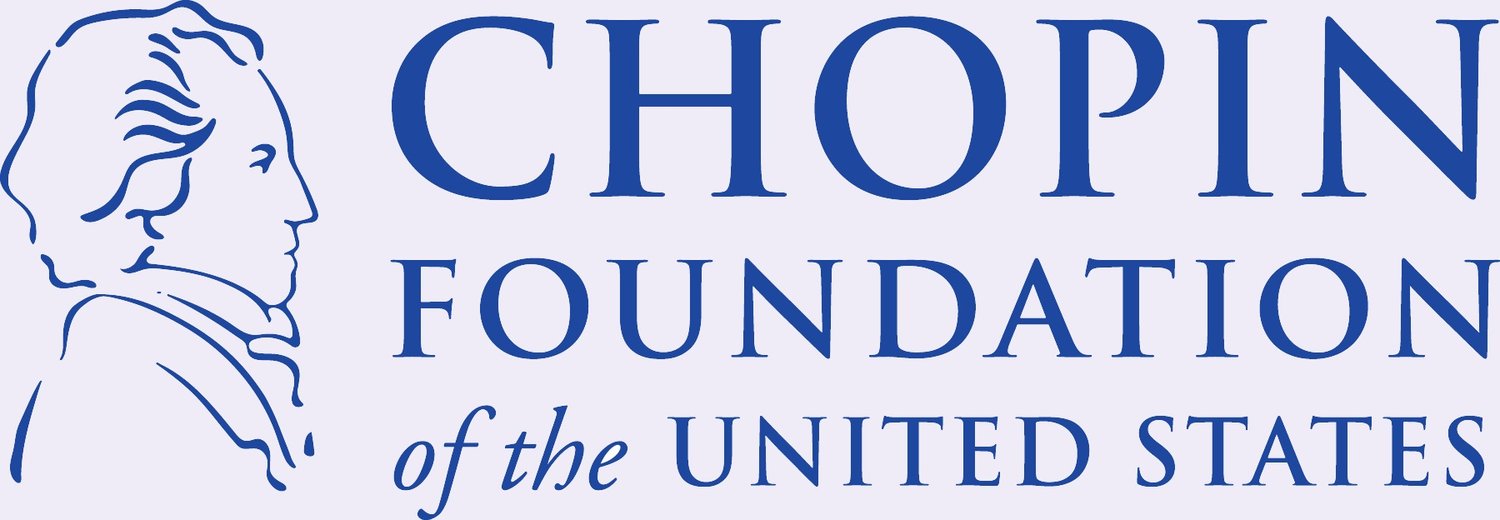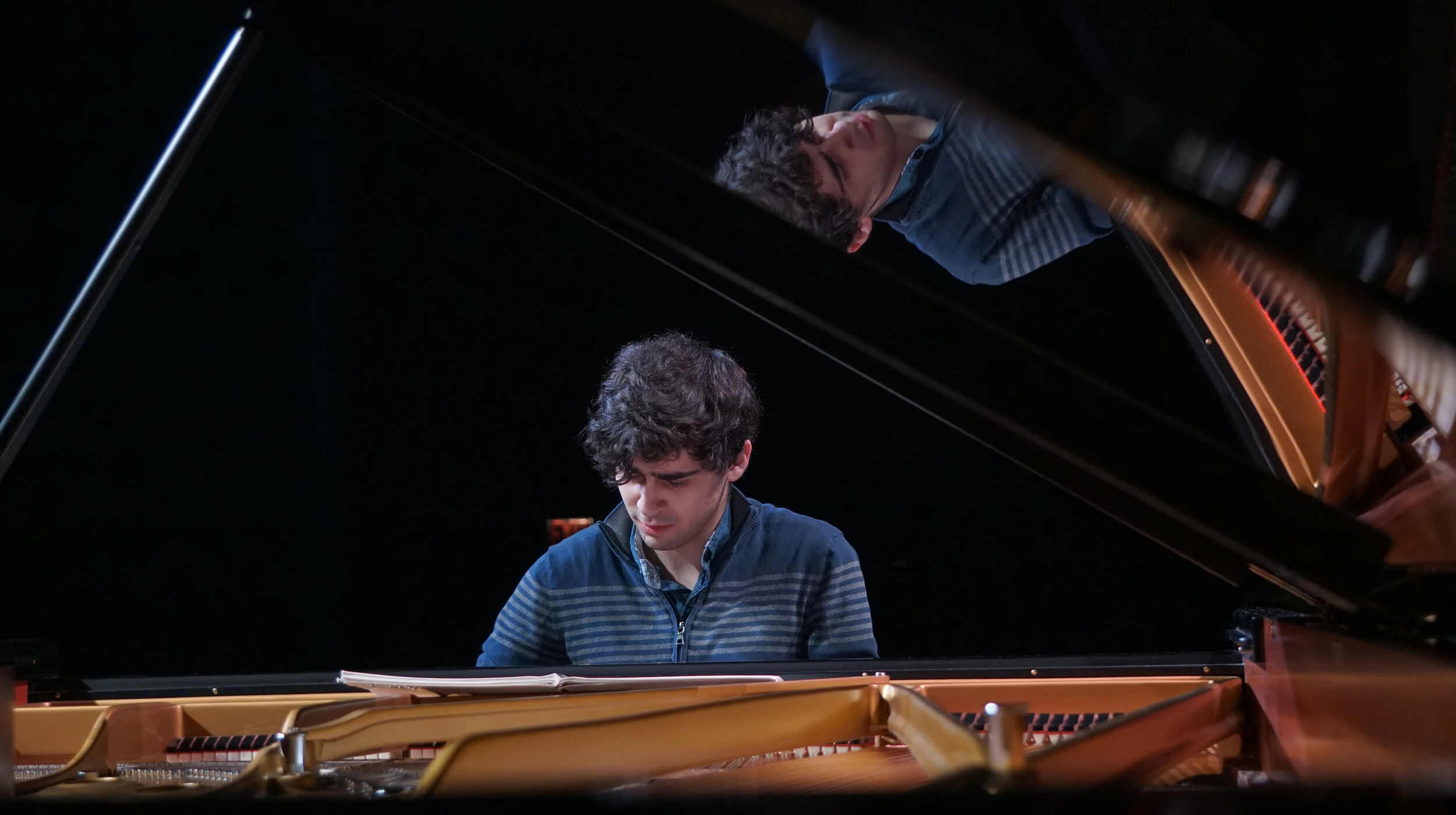Chopin Salon @ Home: Evren Ozel
While the Chopin Foundation’s physical office may be closed to comply with stay at home orders, we are still working online and are excited to share a new initiative - Chopin Salons @ Home. We sincerely hope all of our members and subscribers are keeping safe during this international health crisis and since our live concerts have been canceled through May, we invite you to access these selected programs online!
We are pleased to share the first in a series of Chopin Salons @ Home. This week we feature videos from the 2020 National Chopin Piano Competition where the second prize was awarded to Evren Ozel. We worked with Evren to curate a lovely program of Chopin’s Mazurkas, Polonaise-Fantaisie in A-flat Major, and Impromptu in F-sharp Major for you to enjoy from the comfort of home. Evren discusses the details of this wonderful program with the Chopin Foundation in the following exclusive interview.
About Evren Ozel
Evren Ozel has performed with orchestras such as the Cleveland Orchestra, Jacksonville Symphony, Minnesota Orchestra, and Boston Pops. He has taken masterclasses from Andras Schiff, Richard Goode, Paul Lewis, and other notable artists. He has performed three times on NPR’s From the Top, and has participated in festivals such as Marlboro Music Festival and ChamberFest Cleveland. After graduating from Walnut Hill in 2017, he matriculated to New England Conservatory, where he currently studies with Wha Kyung Byun. A fun fact about Evren is that among the NEC community, he is known for doing the very best Owen Wilson impersonation.
Mazurkas Op. 56
This Chopin Salon @Home will begin with Evren performing Mazurkas Op. 56. It is easy to see why the Competition Jury awarded Evren the special prize for “Best Mazurkas!” He confirmed that the Mazurkas are unique among Chopin’s repertoire because they were steadily composed throughout his life and therefore they depict the development of his compositional style. By the time Chopin began publishing the Mazurkas, he had already left his homeland Poland for the final time. In this way, they serve as a musical memory of Poland.
“The Op. 56 Mazurkas are some of the most interesting of the genre. The first one in B Major begins ambiguously, moving very quickly without a firm cadence from B, to A, to G Major, and we don’t have a true cadence in B Major until about 15 bars later. This nostalgic first section appears three times in the piece,” says Evren.
“In between the iterations is a spritely inner section in which the right hand flows gracefully up and down the keyboard while the left hand keeps time, eventually dropping out allowing the right hand to spiral downward, embracing the rhythmically unknown,” he says. In these inner sections, Chopin expertly employs the use of ‘chromatic mediants’ by shifting away from the tonic key of the piece (B Major) into E-flat Major and G Major.”
A defining feature of the lively second Mazurka in C Major, “Oberek”, is that it is meant to be felt in one as opposed to being felt in three, which gives the music a certain lightness. “The interval of the open 5th plays a major role in this piece, giving it even more of a folk-style, barn-dance feel. Some sections of this Mazurka sound rather rambunctious, but an enigma appears towards the end where the right and left hands go up and down on smooth modal scales, in perfect imitation,” Evren continued.
The third Mazurka is a shift into C minor, and is similar to a Ballade. “It begins with a light discussion between the middle voice and the outer voices, ending in an outburst in D minor from the middle voice, and a subsequent understanding/apology in D minor from the outer voices,” says Evren.
The middle section is a joyous contrast to the opening section and features the stereotypical Mazurka rhythm in B-Flat Major. “In this middle section, however, lies another ‘middle section’ or interlude, harmonically nomadic, and giving the impression of gypsies: a melody full of soul and melancholy flows in the right hand while the left hand strums chords like a guitar on the second and third beats.”
Continuing, Evren explains, “Here there is a return to the first mazurka, as the left hand once again drops out. We are brought back to the ‘original’ middle section in B-Flat Major, and soon to the opening material. The coda of this last Mazurka showcases a brilliant side of Chopin”, Evren asserts, “the way he combines Bach-like counterpoint with the folk music of his homeland.”
Polonaise-Fantaisie, Op. 61
To Evren, Polonaise-Fantaisie (Op. 61) is Chopin’s greatest masterpiece.
After reading Alan Walkers recent publication, Fryderyk Chopin: A Life and Times, Evren learned that, “In December 1845, a few months before completing the composition, Chopin wrote a letter to his family about the work-in-progress, noting he was unsure what to name it once he finished. This minor detail gives us a hint at the mysteries in this piece, and how he was venturing into new forms toward the end of his life.”
The title of the work is relatively self explanatory. “The piece is a fantasy, taking the listener to so many different places in Chopin’s musical world. At the same time, the rhythm and the meter of the polonaise are woven in perfectly”, Evren says. “The work encompasses the full emotional range of Chopin: the most introspective, the most pleasant, the most painful, the most ecstatic, and everything in between.”
Impromptu, Op. 36
“Of Chopin’s four Impromptus, the second in F-sharp Major (Op. 36) is the most complex and, consequently, the most underplayed. The piece as a whole seems to wash over the listener as a dream,” explained Evren.
The left hand sets the tone with a promenade, and the right hand responds with one of Chopin’s masterful ‘bel canto’ melodies. “The melody gets suspended on the dominant, and a choir of angels appears in the upper register of the piano, serving as a transition into a rather explosive ‘alla marcia’ section, in the key of D Major (chromatic mediant to F-sharp Major, the tonic key of the piece).”
To return to the original key of F-sharp Major, Chopin expertly uses chromaticism for two bars. “This time, over undulating waves in the left hand, in the key of F Major (chromatic mediant to D Major, key of the ‘alla marcia’). This material gets transposed back to the home key of F-sharp Major, and gets more and more excited until the emotional climax of the piece, where the right hand sweeps up and down the keyboard while the bass line in the left hand sings a supportive melody. The fast runs calm down, and the choir of angels returns one last time,” Evren concluded.
Thank you Evren, for this insightful tour of these great works by Chopin and which you performed so beautifully at the 10th National Chopin Piano Competition. We look forward to seeing you next season when we can again resume our live programming.
We hope you enjoy this first Chopin Salon @ Home! Please let us know what you think.
Evren Ozel
Chopin Foundation programs are made possible with the support of the Miami-Dade County Department of Cultural Affairs and the Cultural Affairs Council, the Miami-Dade County Mayor and Board of County Commissioners; and the City of Coral Gables. Sponsored in part by the State of Florida, Department of State, Division of Cultural Affairs and the Florida Council on Arts and Culture; Funding Arts Broward; the Miami Salon Group; and scores of generous donors.

